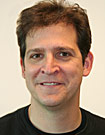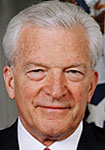Lawrence University Associate Professor of Economics David Gerard will be among the invited guest speakers at a symposium Feb. 12-14 on sustainability and corporate social responsibility at Grinnell College, his undergraduate alma mater.

Gerard presents “The Capitalists’ Cooperative: Economics of Organization and its Implications of Corporate Social Responsibility” on the second evening of the symposium.
Prior to his symposium address, Gerard delivers the Economics Colloquium “Waiting for Godot and for Corporate Social Responsibility?” Tuesday, Feb. 5 at 11:15 a.m in Steitz Hall of Science, 102.
A scholar whose research interests focus on the areas of risk regulation and public policy, Gerard joined the Lawrence faculty in 2009 after eight years at Carnegie Mellon University, where he was the executive director of the Center for the Study & Improvement of Regulation in the department of engineering and public policy.
In addition to a bachelor’s degree in American studies and economics from Grinnell, Gerard earned a Ph.D. in economics from the University of Illinois.
About Lawrence University
Founded in 1847, Lawrence University uniquely integrates a college of liberal arts and sciences with a nationally recognized conservatory of music, both devoted exclusively to undergraduate education. It was selected for inclusion in the Fiske Guide to Colleges 2013 and the book “Colleges That Change Lives: 40 Schools That Will Change the Way You Think About College.” Individualized learning, the development of multiple interests and community engagement are central to the Lawrence experience. Lawrence draws its 1,500 students from nearly every state and more than 50 countries. Follow Lawrence on Facebook.

 A Lawrence University economist, working with the Center for the Study & Improvement of Regulation at Carnegie Mellon University in Pittsburgh, Pa., has helped develop a website that allows users to easily access publicly-available data and compare mortality risks based on several different categories, such as age, gender and where you live.
A Lawrence University economist, working with the Center for the Study & Improvement of Regulation at Carnegie Mellon University in Pittsburgh, Pa., has helped develop a website that allows users to easily access publicly-available data and compare mortality risks based on several different categories, such as age, gender and where you live.